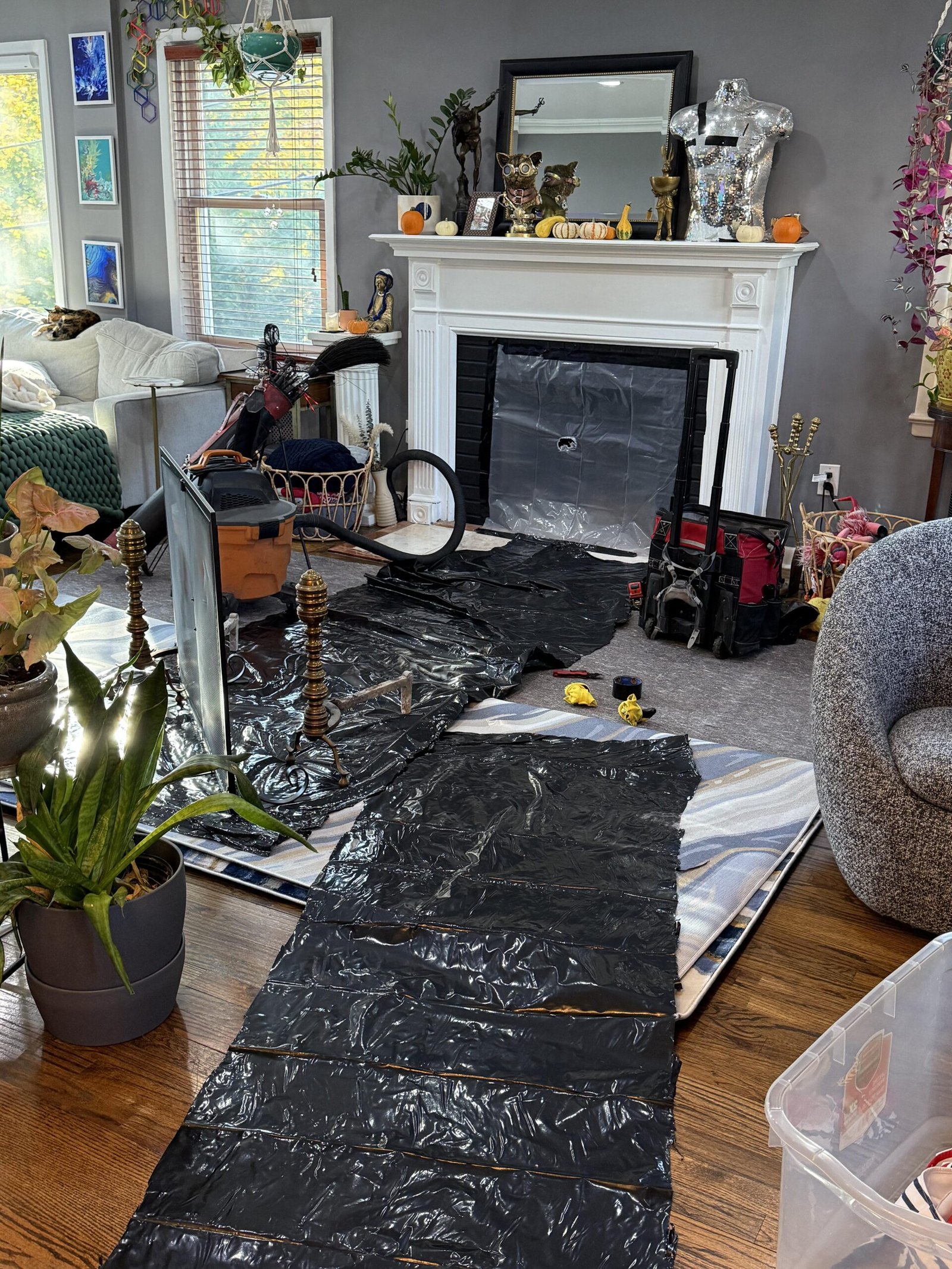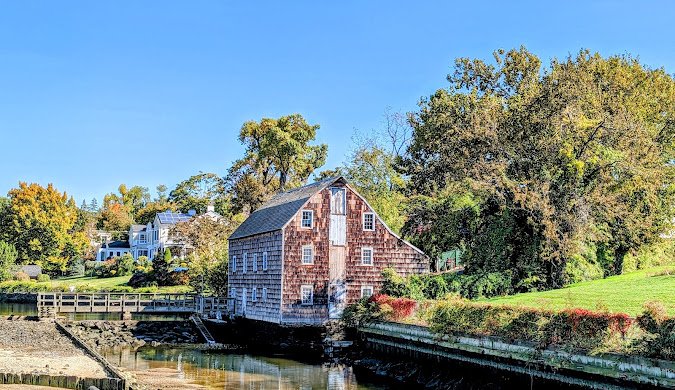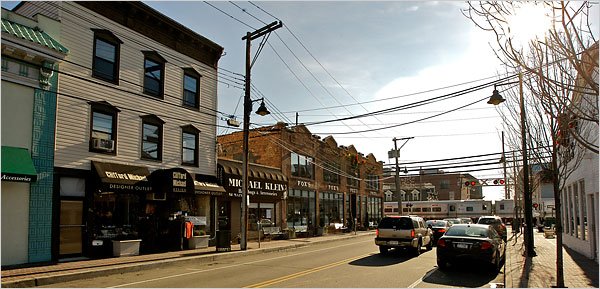“Ensure the safety and longevity of your chimney with a professional chimney crown replacement. Don’t wait until it’s too late, protect your chimney today. Visit chimney360.com to learn more and schedule your replacement.”
The Importance of Chimney Crown Replacement for Protecting Your Chimney
Chimneys are an essential part of any home that has a fireplace or wood-burning stove. They provide a safe and efficient way to remove smoke and gases from the home, keeping the air clean and breathable. However, many homeowners overlook the importance of maintaining their chimney, specifically the chimney crown. The chimney crown is the topmost part of the chimney that protects it from the elements. It is crucial to ensure that the chimney crown is in good condition to protect your chimney and your home.
Over time, the chimney crown can deteriorate due to exposure to harsh weather conditions such as rain, snow, and extreme temperatures. The constant exposure to these elements can cause cracks, chips, and other forms of damage to the chimney crown. If left unaddressed, these damages can lead to more significant issues that can be costly to repair. This is why regular Chimney Crown Replacement is essential for protecting your chimney.
One of the main functions of the chimney crown is to prevent water from entering the chimney. Water can cause significant damage to the chimney, including rusting the metal components, deteriorating the masonry, and causing mold growth. A damaged chimney crown can allow water to seep into the chimney, leading to these issues. By replacing the chimney crown, you can ensure that your chimney remains dry and free from water damage.
Another crucial function of the chimney crown is to keep animals and debris out of the chimney. A damaged chimney crown can create openings that allow animals such as birds, squirrels, and raccoons to enter the chimney. These animals can build nests, causing blockages and potential fire hazards. Debris such as leaves, twigs, and branches can also enter the chimney through a damaged crown, obstructing the airflow and increasing the risk of a chimney fire. By replacing the chimney crown, you can prevent these unwanted visitors and debris from entering your chimney.
Furthermore, a damaged chimney crown can compromise the structural integrity of the chimney. The crown acts as a barrier between the chimney and the rest of the roof, preventing water from seeping into the surrounding materials. If the chimney crown is damaged, water can enter the chimney and cause the bricks and mortar to deteriorate. This can lead to a weakened chimney structure, which can be dangerous and costly to repair. By replacing the chimney crown, you can protect the structural integrity of your chimney and avoid costly repairs in the future.
It is essential to note that not all chimney crowns are created equal. Some older chimneys may have a mortar crown, which is made of a mixture of cement and sand. While this type of crown may have been effective in the past, it is prone to cracking and deteriorating over time. Nowadays, most chimney crowns are made of concrete or metal, which are more durable and long-lasting. If your chimney has a mortar crown, it is highly recommended to replace it with a more modern and durable material.
In conclusion, the chimney crown is a vital component of your chimney that plays a significant role in protecting it from the elements. Regular chimney crown replacement is crucial for maintaining the integrity of your chimney and preventing costly repairs. If you notice any signs of damage to your chimney crown, such as cracks, chips, or missing pieces, it is essential to address them promptly by hiring a professional chimney sweep. By doing so, you can ensure that your chimney remains in good condition and continues to provide you with warmth and comfort for years to come.
Signs That Your Chimney Crown Needs Replacement for Optimal Protection

Chimneys are an essential part of any home, providing ventilation for fireplaces and heating systems. However, many homeowners overlook the importance of maintaining their chimney’s crown, which is the topmost part of the chimney. The chimney crown plays a crucial role in protecting the chimney from water damage, and neglecting its maintenance can lead to costly repairs. In this article, we will discuss the signs that indicate your chimney crown needs replacement for optimal protection.
First and foremost, it is essential to understand the purpose of a chimney crown. The crown is a concrete or mortar layer that covers the top of the chimney, acting as a barrier between the chimney and the outside elements. Its primary function is to prevent water from entering the chimney and causing damage. The crown also helps to keep animals, debris, and other foreign objects out of the chimney.
One of the most common signs that your chimney crown needs replacement is visible cracks or deterioration. Over time, exposure to harsh weather conditions can cause the crown to crack or crumble. These cracks can allow water to seep into the chimney, leading to water damage and potential structural issues. If you notice any cracks or deterioration on your chimney crown, it is crucial to address them promptly to prevent further damage.
Another sign that your chimney crown needs replacement is water leaks inside your home. If you notice water stains on your ceiling or walls near the fireplace, it could be a sign that your chimney crown is damaged. As mentioned earlier, the primary function of the crown is to prevent water from entering the chimney. If it is not functioning correctly, water can seep into your home, causing damage to your walls, ceilings, and even your furniture. It is essential to address this issue immediately to avoid costly repairs in the future.
In addition to visible cracks and water leaks, a damaged chimney crown can also cause issues with your chimney’s draft. The draft is the flow of air that carries smoke and other byproducts out of the chimney. If the crown is damaged, it can disrupt the draft, causing smoke to enter your home instead of being directed outside. This can not only be a nuisance but also a health hazard. If you notice an increase in smoke inside your home when using your fireplace, it could be a sign that your chimney crown needs replacement.
Furthermore, a damaged chimney crown can also lead to chimney fires. As mentioned earlier, the crown acts as a barrier between the chimney and the outside elements. If it is damaged, it can allow heat to escape, which can cause the surrounding materials to catch fire. This can be extremely dangerous and can lead to a house fire. If you notice any signs of a damaged chimney crown, it is crucial to address them immediately to avoid any potential hazards.
In conclusion, the chimney crown is a vital component of your chimney, and its maintenance should not be overlooked. Signs such as visible cracks, water leaks, draft issues, and chimney fires are all indications that your chimney crown needs replacement for optimal protection. It is essential to address these issues promptly to avoid costly repairs and potential hazards. Regular maintenance and timely replacement of your chimney crown will not only protect your chimney but also ensure the safety of your home and family.
How to Choose the Right Materials for Your Chimney Crown Replacement to Ensure Long-Term Protection
Chimneys are an essential part of any home, providing ventilation for fireplaces and heating systems. However, they are also exposed to the elements, making them susceptible to damage over time. One of the most vulnerable parts of a chimney is the crown, which sits at the top and acts as a protective barrier against rain, snow, and debris. Over time, the crown can deteriorate and require replacement to ensure the long-term protection of your chimney. In this article, we will discuss how to choose the right materials for your chimney crown replacement to ensure its durability and effectiveness.
The first step in choosing the right materials for your chimney crown replacement is to understand the purpose of the crown. The crown is designed to prevent water from entering the chimney and causing damage to the structure. It also helps to keep animals and debris out, preventing blockages and potential fire hazards. Therefore, the materials used for the crown must be able to withstand harsh weather conditions and provide a strong barrier against external elements.
One of the most commonly used materials for chimney crowns is concrete. Concrete is a durable and cost-effective option that can withstand extreme temperatures and weather conditions. It is also easy to shape and mold, making it a popular choice for custom chimney crowns. However, concrete can crack over time, especially if it is not properly reinforced. Therefore, it is essential to use high-quality concrete and ensure proper installation to prevent any future issues.
Another popular material for chimney crowns is metal. Metal crowns are typically made of stainless steel or copper, both of which are highly resistant to corrosion and can withstand extreme weather conditions. They are also lightweight and easy to install, making them a preferred choice for many homeowners. However, metal crowns can be more expensive than concrete, and they may require regular maintenance to prevent rusting.
In recent years, a newer material has emerged as a popular choice for chimney crowns – elastomeric coatings. These coatings are made of a flexible, rubber-like material that can be applied directly to the chimney crown. They provide a waterproof barrier and can expand and contract with the changing temperatures, reducing the risk of cracking. Elastomeric coatings are also relatively easy to apply and can be a cost-effective option for chimney crown replacement.
When choosing the right material for your chimney crown replacement, it is essential to consider the climate and weather conditions in your area. If you live in an area with frequent rain or snow, a material that is highly resistant to water is crucial. On the other hand, if you live in an area with extreme temperatures, a material that can withstand heat and cold is necessary. Consulting with a professional chimney contractor can help you determine the best material for your specific location and needs.
In addition to the material, the design and construction of the chimney crown are also crucial factors to consider. A well-designed crown should have a slight slope to allow water to run off and prevent pooling. It should also have an overhang to protect the chimney’s sides and prevent water from seeping in. The crown should also be properly sealed to the chimney to prevent any gaps or cracks that could allow water to enter.
In conclusion, choosing the right materials for your chimney crown replacement is essential to ensure its long-term protection. Concrete, metal, and elastomeric coatings are all viable options, each with its own advantages and considerations. Consulting with a professional and considering your climate and weather conditions can help you make an informed decision. With the right materials and proper installation, your chimney crown can provide reliable protection for years to come.














